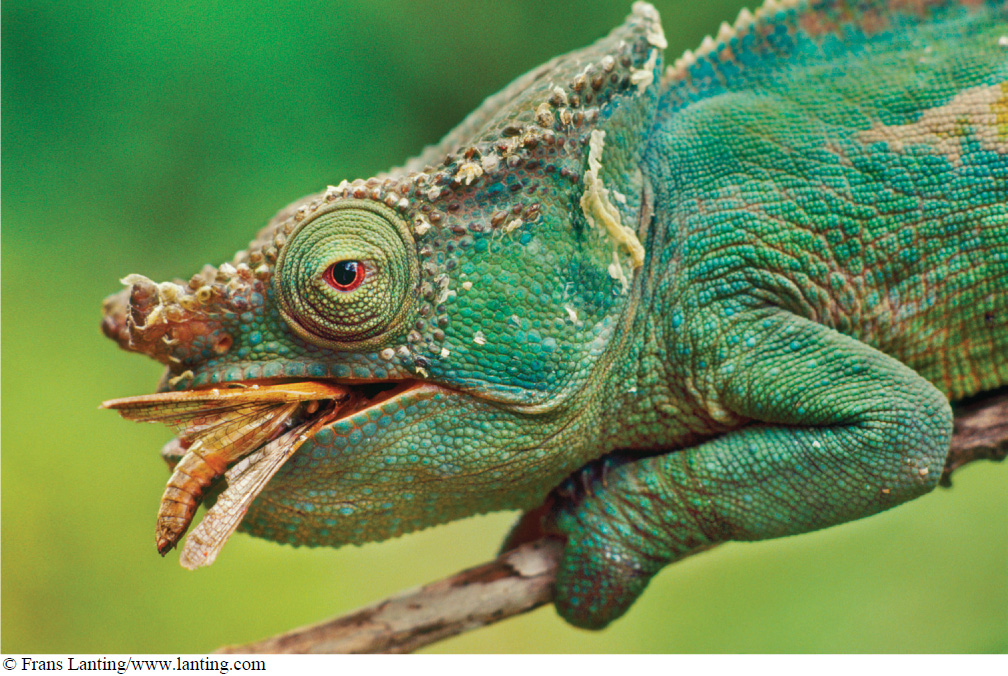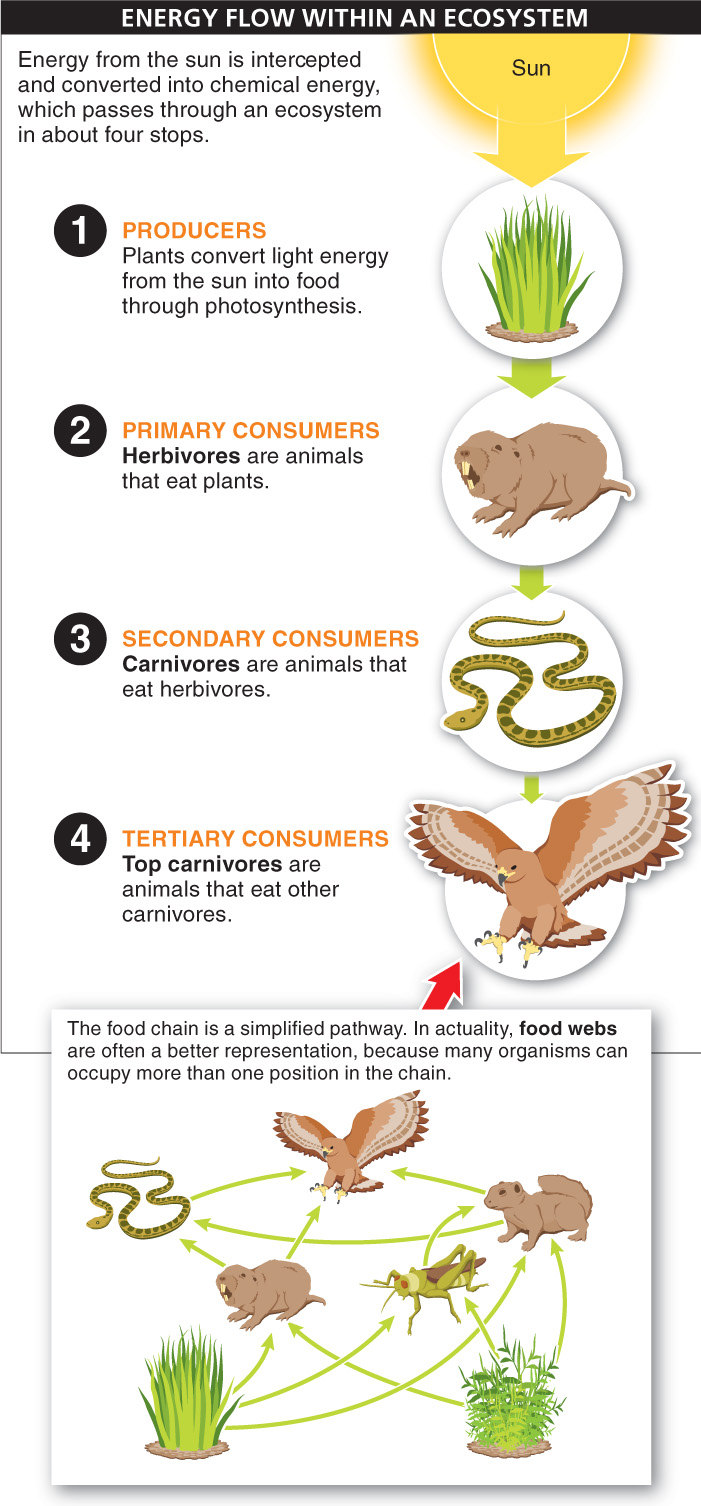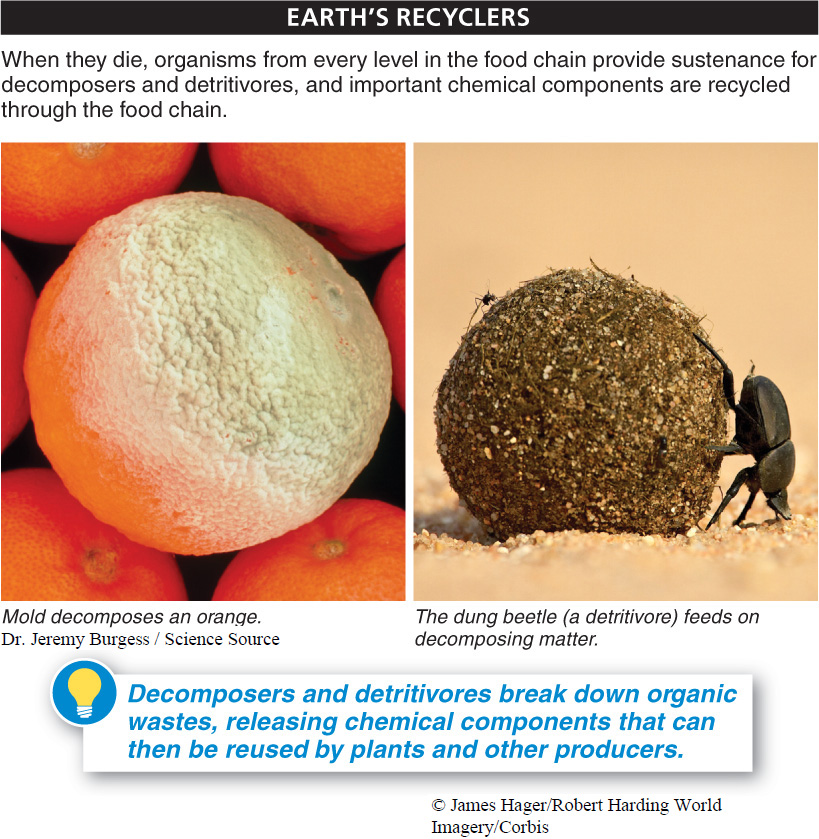
All life on earth is made possible because energy flows perpetually from the sun to the earth. Looking at an ecosystem such as a desert savanna, for example—
The sun is where our pathway of energy flow begins. Most of the energy is absorbed or reflected by the earth’s atmosphere or surface, but about 1% of it is intercepted and converted to chemical energy through photosynthesis. That intercepted energy is then transformed again and again by living organisms, making about four stops as it passes through an ecosystem. Let’s examine what happens at each of the stops, known as trophic levels (FIGURE 15-12).

First stop: producers. When it comes to energy flow, all the species in an ecosystem can be placed in one of two groups: producers and consumers. Plants (along with some algae and bacteria) are the producers. They convert the sun’s light energy into chemical energy through photosynthesis, as discussed in Chapter 4. We use another word to describe that chemical energy: food. The amount of organic material produced in a biome is called its primary productivity level.
Second stop: primary consumers—
Third stop: secondary consumers—
Fourth stop: tertiary consumers—
621
This path from producers to tertiary consumers is called a food chain. We see later in this chapter why a food chain almost never extends to a fifth stop.
The food chain pathway from photosynthetic producers through the various levels of animals is a slight oversimplification. In actuality, food chains are better thought of as food webs, because many organisms are omnivores and can occupy more than one position in the chain (see Figure 15-12). When you eat a simple meal of chicken and vegetables, after all, you’re simultaneously a carnivore and a herbivore. On average, about 30% to 35% of the human diet comes from animal products and the remaining 70% to 65% from plant products. Many other animals, from bears to cockroaches, also have diets that involve harvesting energy from multiple stops in the food chain.
In every ecosystem, as energy is transformed through the steps of a food chain, organic material accumulates in the form of animal waste and dead plant and animal matter. Decomposers, usually bacteria or fungi, and detritivores, including scavengers such as vultures, worms, and a variety of arthropods, break down the organic material, harvesting energy still stored in the chemical bonds (FIGURE 15-13). Decomposers are distinguished from detritivores because the decomposers are able to break down a much larger range of organic molecules. But both groups release many important chemical components from the organic material, which can eventually be recycled and used by plants and other producers.

622
Energy flows from one stop to the next in a food chain, but not in the way that a baton is passed by runners in a relay race. The difference is that at every step in the food chain, much of the usable energy is lost as heat. An animal that eats five pounds of plant material doesn’t convert that into five new pounds of body weight. Not by a long shot. In the next section, we’ll see how this inefficiency of energy transfers ensures that most food chains are very short.
TAKE-HOME MESSAGE 15.6
Energy from the sun passes through an ecosystem in several steps known as trophic levels: (1) producers convert light energy to chemical energy in photosynthesis; (2) herbivores then consume the producers; (3) the herbivores are consumed by carnivores; and (4) the carnivores may be consumed by top carnivores. Detritivores and decomposers extract energy from organic waste and the remains of dead organisms. At each step in a food chain, some usable energy is lost as heat.
What is the difference between a food chain and a food web?
A food chain indicates the trophic level to which each organism belongs: primary producers, primary consumers, secondary consumers, or tertiary consumers. A food web acknowledges that many organisms operate at multiple trophic levels. For example, a human eating a hamburger is both a primary consumer and a secondary consumer.